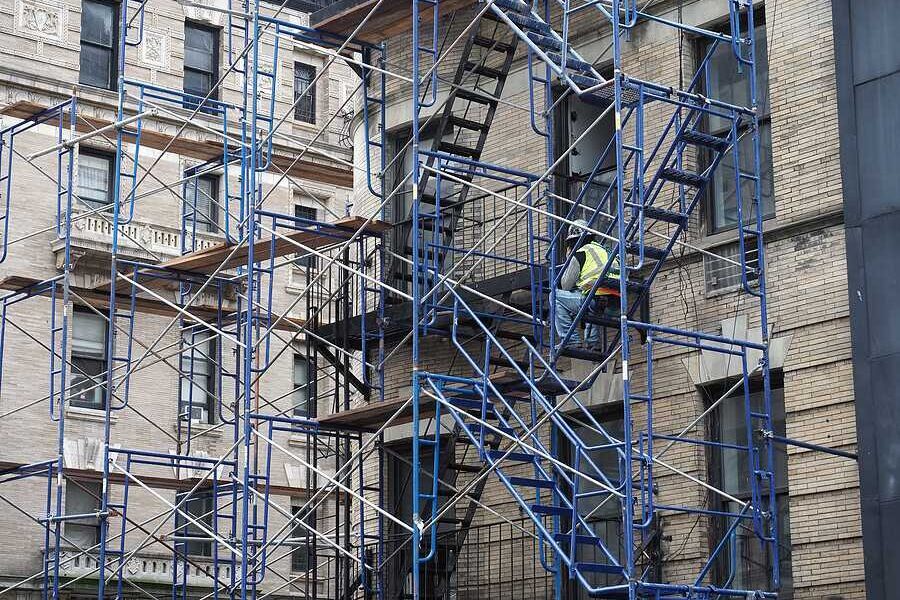Hiring Contractors? Follow These Risk Management Tips

While some property owners are handy and enjoy upgrading and maintaining their buildings, most people rely on professional contractors. Even minor repairs and improvements, however, can involve some level of risk. Landlords and building owners in New York face additional liability, thanks to 19th-century legislation. This article explains the Scaffold Law and offers guidelines for reducing risk when hiring contractors.
The New York Scaffold Law
Under New York Labor Law Section 240 (1), also known as the Scaffold Law, building owners and/or their managing agents may be held liable for certain on-the-job injuries to contractors.
The legislation was enacted in 1885 to protect construction workers who faced greater dangers as the New York City skyline began its upward climb. The measure held employers—contractors and building owners—responsible for ensuring the safety of those working above the ground.
Although known as the Scaffold Law, building owners can be liable for injuries to workers when a scaffold is nowhere in sight. In fact, a contractor can be hurt while standing on the floor, and the building owner can face consequences. Essentially, the law says contractors, owners, and their agents are liable for any gravity-related injury suffered by a worker.
Examples of the Scaffold Law in Action
Today, the law applies not only to workers involved with high-elevation projects, such as bridges and high-rise buildings, but also to anyone who uses ladders, scaffolding or other devices to complete a job. Below are some examples of situations that resulted in an insurance claim or lawsuit under the Scaffold Law:
- A worker sustained injuries after falling from a roof while removing snow and ice.
- A maintenance worker fell from a ladder while repairing ceiling insulation.
- A carpenter working on a ceiling was injured after falling from four-foot stilts.
In the above examples, the property owners were alleged to be liable. They hired the contractors, and Section 240 of New York Labor Law requires them to provide proper protection.
As the law is written, even if a worker was injured while using a pulley or rope, there may be a legal issue.
5 Contractor Risk Management Tips
To help reduce your chances of being involved in litigation, follow these risk management tips:
- Before starting any work, secure a written contract with an indemnity provision to ensure that the contractor, and not the building owner or its managing agent, is held responsible for losses arising from the contractor’s work on the property. A qualified attorney should review such contracts and agreements before signing.
- Ask to be named as a “primary” and “non-contributory” additional insured on the contractor’s general liability policy. In the event of any loss arising from the contractor’s work at the building, the contractor’s insurance carrier will cover the loss to the extent of its coverage limits.
- Exercise due diligence when hiring contractors. Review previous work, and request recommendations from previous customers. In addition, request a certificate of insurance to make sure the contractor has adequate insurance coverage, including liability and workers’ compensation insurance. (Even sole proprietors need workers’ compensation coverage.)
- Confirm that the contractor’s license is valid and up to date. The New York City Department of Buildings maintains an online directory of licensed professionals.
- Do not provide any tools, ladders, and other equipment or safety devices to contractors, tenants or tenants’ contractors. Doing so may make you liable for an accident that involves the use of such equipment. Make sure every employee knows not to be “helpful” by supplying tools or materials to any contractor.
In the event of an incident, building employees should not give any statements unless the person requesting the information provides proper identification as an authorized representative of the insured’s insurance carrier. Also, contact your own insurer immediately if an incident occurs before talking to the contractor’s insurance provider.
Helping NYC Landlords Manage Risk Since 1976
Stu Cohen and the City Building Owners Insurance team specialize in helping owners of brownstones, small apartment buildings, and mixed-use properties manage risks. Request a complimentary, no-obligation policy review to ensure you have the right policy and protection for your needs. We can also recommend ways to reduce your risk profile to qualify for lower premiums.
If you are planning to hire contractors and have any questions about how to manage your risk, or if you would like a free insurance review, please call us at 877-576-5200.

